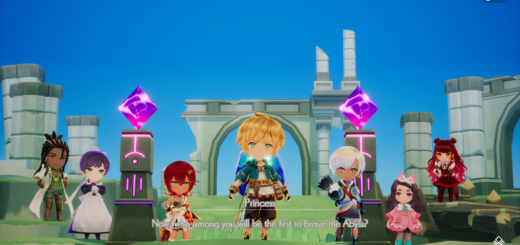Bloodstained: Ritual of the Night E3 Impression
Bloodstained: Ritual of the Night, developed by ArtPlay and published by 505 Games, is a game that merges traditional Metroidvania gameplay with tons of moody atmosphere and hyper-violent anime sensibilities. Players control an orphan named Miriam whose body, years earlier, was torturously transformed by alchemists. As one of only two survivors of a planned ritual sacrifice by the same alchemists, she has been cursed ever since to slowly turn into crystal.
Miriam’s curse also makes her a Shardbinder, with the power to assimilate shards from fallen enemies and take them inside herself, painfully and at the risk of losing more of her humanity. Having been in a deep sleep for years, she awakes just as a mysterious castle appears, setting loose waves of demons upon England. Gebel, a Shardbinder like Miriam and the architect of this plague of demons, has gone mad after years of physical torment and is planning on making the world suffer just as he himself has suffered.
As the game opens, Miriam and her ally Johannes, an alchemist who appears in dialog events but not in combat, are heading toward the mysterious castle, when demons invade the ship they’re traveling on. The gameplay is the expected 2.5D sidescrolling action, with Miriam able to equip different armor and weapons, dramatically altering her combat style. Bladed weapons offer up-close attacks while guns can deal with enemies at a distance — though guns rely on limited ammo to be at their most effective, with a weaker, unlimited ammo type also available. Melee fighting is also an option — Miriam started the demo equipped with Kung Fu Shoes, letting me send kicks galore to take out my foes. Sadly, there didn’t seem to be a way to switch between weapons on the fly, which would have been a nice concession for boss fights, if nothing else.
The gameplay was otherwise enjoyable, with simple pick-up-and-play mechanics. Being a Shardbinder, Miriam is also able to equip different-colored shards for various effects. Five different colored slots can each have one corresponding shard put into them, with each color symbolizing a different effect, like one being a magic spell she can cast, and another giving her a familiar, though I didn’t get to see the latter in action.
Finally, after making my way through a section of the galleon level, I skipped ahead to the level’s boss fight, a tentacled sea demon towering above the ship’s bow. Having switched to a musket with powerful ammunition previously, I was able to take on the demon from a distance, though the constantly-whipping tentacles didn’t seem to make this a much safer option than any other. After one failed attempt, I bested the beast, and Miriam bound its shard into herself, giving her the power to summon a tentacle attack from the great beyond in upcoming battles. Throughout the game, defeating bosses will grant Miriam further additional powers as she takes their shards into herself after first being violently impaled by them.
The story continued as the pair made landfall and arrived at a village. This is where a new character, and an additional in-game narrative conflict between the alchemists and the church, was introduced. I had seen all I really needed to by that point: Bloodstained takes elements of other Metroidvania games, like returning to previous levels to access new areas, and merges it with a very gothic and dark atmosphere, making it a perfect candidate for those looking for these qualities. The gameplay was fun, fluid, and easy to pick up, and I will definitely be looking for this one when it releases on Xbox One, PlayStation 4, Switch, and PC later this year.










Recent Comments